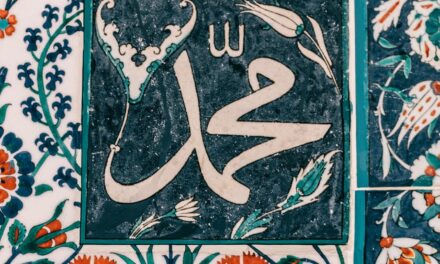The books of tafseer have been divided into two general categories according to the emphasis of their authors in their explanations. The tafseers of those who restricted their explanations to transmitting what was explained in the Qur’an or stated by the Prophet (ﷺ), his companions, and their students were referred to as tafseer bir-riwaayah or tafseer bil-ma’thoor (tafseer according to transmission). The authors of such tafseers also avoided unfounded interpretations and unnecessary explanations and always accepted authentic narrations. This is not to say that such tafseers are totally free of personal judgment and opinion, for any tafseer, of necessity, must reflect the opinion of the individual who compiles it. But in this case, personal opinion was kept to a minimum.
On the other hand, those tafseers in which the authors often relied on their personal opinions for explanations, interpretations and deductions were called tafseer bid-diraayah or tafseer bir-ra’y (tafseer according to opinion). In some of these types of tafseers, narrated explanations from the Prophet (ﷺ), the sahaabah , and their students (taabi‘oon) are mentioned prior to personal interpretation, and the deductions or opinions are in agreement with narrated explanations, grammatical rules, and lexical meanings, while in others there is a partial or even total disregard for narrated explanations, grammatical rules, and word meanings. Tafseers of the first type are acceptable, while those based mostly or solely on unfounded opinion are considered heretical or bordering on heresy. Allah and His Prophet (ﷺ) have expressly forbidden unfounded explanations of the Qur’an. For example, it was forbidden in the verse,
“And do not pursue that of which you have no knowledge.”
The Prophet (ﷺ) also condemned expression of uninformed opinion in religious matters, saying,
“ Allah won’t remove knowledge after giving it to you by removing it (from you). Rather he will remove it from (later generations) by taking (the souls of) the scholars along with their knowledge, until only ignorant people remain. They will be asked for religious verdicts, so they will issue verdicts based on their opinions, leading others astray and going astray themselves.”
Therefore, it could be generally said that narrations from the Prophet (ﷺ), the sahaabah, and the taabi‘oon are superior to those based on opinion. But if the narrations are not authentic, such tafseers may then be actually worse than some of those based on opinion.
A brief description of some of the most famous tafseers and their authors follows.
TAFSEER BIR-RIWAAYAH
1.Tafseer Ibn ‘Ateeyah, al-Muharrar al-Wajeez
Abdul-Haqq ibn ‘Ateeyah al-Andaloosee (1089-1146 CE/481-540 AH) was a Maalikee scholar and judge in both Spain and Morocco. Ibn ‘Ateeyah’s tafseer contains a summary of accurate narrations found in the earlier tafseers bir- riwaayah. He also included many examples from classical literature and discussed extensively the grammatical wonders of the Qur’an. A number of scholars preferred Ibn ‘Ateeyah’s tafseer over that of az-Zamakhsharee’s. This tafseer consists of twenty volumes in manuscript form. It has recently been published in sixteen volumes.
2. Tafseer Abil-Layth as-Samarqandee, Bahr al-‘Uloom
Abul-Layth ibn Ibraaheem as-Samarqandee (d. 983 CE/ 372 AH) was a fiqh scholar of the Hanafee school and was nicknamed “Imaam al-Hind.” His tafseer was based on hadeeths and narrations from the sahaabah, the taabi‘oon, and later scholars. However, it does contain some weak narrations, and the chains of narrations for statements from the sahaabah and taabi‘oon were not mentioned, nor were their opinions analyzed. This tafseer consists of four volumes and is in print.
3. Tafseer Abee Ishaaq, al-Kashf wa al-Bayaan ‘an Tafseer al-Qur’aan
Aboo Ishaaq, Ahmad ibn Ibraaheem ath-Tha‘labee (d. 1036 CE/427 AH), from Nishapur, was a well-known Quraa’nic reciter of his time. In his tafseer, the chains of narrations from the sahaabah are mentioned but condensed. Grammatical explanations are quite extensive and legal issues are discussed at length. However, Aboo Ishaaq also mentions a vast number of Israa’eeleeyaat (Biblical stories) without any critical analysis of their content whatsoever. Moreover, he also included many weak and fabricated hadeeths in his tafseer due to his weak background in the science of hadeeth.
4. Tafseer Ibn Jareer at-Tabaree, Jaami‘ al-Bayaan fee Tafseer al-Qur’aan
Muhammad Ibn Jareer at-Tabaree (839-923 CE/225-310 AH) was from Tabreez, in what is now western Iran, and was a well-known legalist, hadeeth scholar, and historian. Although originally a Shaafi‘ee scholar, he reached the level of ijtihaad and became independent of the school. His tafseer is the oldest tafseer to reach us intact. It contains narrations which are analyzed in most cases. He mentioned the various recitations and their implications and he included many Biblical tales which were discussed, and the positions of unorthodox schools, such as that of the Mu‘tazilees, were mentioned and refuted. All later tafseers have depended on this tafseer in one way or another.One of the more useful of the many printed editions of this massive work is the one containing the comments of Ahmad Shaakir on the isnaads of the many narrations cited by the author. Unfortunately, the authentication effort was cut short by Shakir’s death, having only completed up to verse five of Soorah Maa’idah.
Read: The State of Saffron in Kashmir
5. Tafseer al-Baghawee, Ma‘aalim at-Tanzeel
Al-Husayn ibn Muhammad al-Baghawee (d. 1117 CE/ 510 AH) was an eminent jurist of the Shaafi‘ee school and one of the foremost hadeeth scholars of his time. His tafseer was a condensed version of Tafseer ath-Tha‘labee, in which the majority of weak and fabricated narrations were removed and all the chains of narrators were mentioned. He also removed various heretical concepts mentioned in ath-Tha‘labee’s tafseer, as well as scientific information not directly related to tafseer. Al-Baghawee briefly mentions some of the various recitations and explains grammatical constructions only where it is absolutely necessary. There are a few Israa’eeleeyaat mentioned without critical analysis and some conflicting opinions of early scholars which are also mentioned without evaluation. This tafseer has been printed in a single edition along with Ibn Katheer’s tafseer and Tafseer al-Khaazin and is among the most reliable tafseers based on narration.
6. Tafseer Ibn Katheer, Tafseer al-Qur’aan al-Atheem
Abul-Fidaa’ Ismaa‘eel ibn Katheer ad-Dimishqee (1300-1373 CE/699-774 AH) was a Shaafi‘ee fiqh scholar and a student of Ibn Taymeeyah. He was also an eminent hadeeth scholar and a historian. His historical work, al-Bidaayah wa an- Nihaayah, is considered the most authentic Islaamic history book. Tafseer ibn Katheer is also considered the most authentic book of tafseer, and is second only to Tafseer at-Tabaree in popularity among scholars. The book contains an extensive preface covering the methodology of tafseer, and great emphasis has been placed upon the interpretation of Qur’aan by Qur’aan. Ibn Katheer critically analyzes all of his narrations and evaluates the conflicting statements of the sahaabah and the taabi‘oon. He also warns against the dangers of Israa’eeleeyaat and other false information commonly found in tafseers. Legal issues are discussed, and differences of opinion are evaluated. An abridged version of this tafseer, from which the inauthentic narrations has been removed, was published in four volumes in the 1980s.
7. Tafseer ath-Tha‘labee, al-Jawaahir al-Hisaan fee Tafseer al-Qur’aan
Abdur-Rahmaan ibn Makhloof ath-Tha‘labee al-Jazaa’iree (d. 1472 CE/877 AH) was a North African Maalikee scholar well known for his piety and knowledge. His tafseer was an abridgement of Ibn ‘Ateeyah’s tafseer, to which he added information from other famous classical tafseers, especially that of at- Tabaree. The hadeeths mentioned were from all the well-known works, and Israa’eeleeyaat were all evaluated. Ath-Tha‘labee lists some of the variant recitations and discusses some grammatical issues, but for the most part, his tafseer is a condensation and compilation of previous works with very little added from himself.
8. TafseerJalaalud-Deen as-Suyootee, ad-Durr al-Manthoor fee at-Tafseer bi al-Ma’thoor
Jalaalud-Deen ‘Abdur-Rahmaan ibn Muhammad as-Suyootee (1445-1505 CE/849-910 AH) was a great Shaafi‘ee fiqh scholar, as well as the foremost hadeeth scholar of his time. At first, he wrote a four volume tafseer called Turjumaan al-Qur’aan, in which he placed over ten thousand hadeeths along with their chains of narration. When he found his students uninterested in learning chains of narration, he condensed the tafseer by deleting the chains and merely mentioned the books from which the hadeeths were taken. This tafseer was renamed ad-Durr al-Manthoor. In spite of his knowledge of the hadeeth sciences, he seems to have been only concerned with gathering the largest possible quantity of hadeeths, without discriminating between the true and the false.
Read: What are the 4 Best Essential Oils for Toenail Fungus?
9. Tafseer ash-Shawkaanee, Fat-h al-Qadeer
Muhammad ibn ‘Alee ash-Shawkaanee (d. 1839 CE 1255 AH) was a resident of San‘aa, Yemen who started his quest for knowledge as a student of the Zaydee math-hab. He studied hadeeth sciences extensively and became independent of his math-hab. In his tafseer, ash-Shawkaanee has combined both methods of tafseer (by opinion and by narration). He has condensed the hadeeth chains and has mentioned the books in which each hadeeth may be found, and most opinions are attributed to their sources. Grammatical, legal, and philosophical issues are discussed and the positions of the great commentators are mentioned. This tafseer is printed in five volumes and is widely favored among orthodox scholars. A recent edition has footnotes that extensively document the hadeeths cited by the author.
10.TafseerIbn ‘Abbaas, Tanweer al-Miqbaas min Tafseer Ibn ‘Abbaas
This tafseer was compiled by Muhammad ibn Ya‘qoob al-Fayroozaabaadee (d. 1414 CE/817 AH), who was a Shaafi‘ee scholar and author of the famous Arabic dictionary, al-Qaamoos al-Muheet. The vast majority of this tafseer consists of explanatory statements attributed to the great sahaabee and mufassir, Ibn ‘Abbaas. The author mentions the chains of narrators for each section of tafseer. Hence, this tafseer is considered as being among the tafseers bir- riwaayah. However, chains of narration attributed to Ibn ‘Abbaas vary in their level of authenticity, depending upon the reliability of the narrators themselves. Chains from Mu‘aawiyah ibn Saalih and Qays ibn Muslim al-Koofee are considered saheeh (highly authentic) and those from Ibn Is-haaq (the historian) are considered hasan (authentic); while those from Ismaa‘eel ibn ‘Abdur- Rahmaan as-Suddee al-Kabeer and ‘Abdul Maalik ibn Jurayj are doubtful. Those from ad-Dahhaak ibn Mazaahim al-Hilaalee, ‘Ateeyah al-‘Awfee, Muqaatil ibn Sulaymaan al-Azdee, and Muhammad ibn as-Saa’ib al-Kalabee, who was accused of fabricating hadeeths, are all da‘eef (unacceptable). Nearly all of the so-called “Tafseer of Ibn ‘Abbaas” is based on statements narrated in chains containing Muhammad ibn as-Saa’ib al-Kalabee. Hence, this tafseer is considered unreliable for the most part; and, despite its popularity among the masses, it is totally rejected by Muslim scholars.







Recent Comments